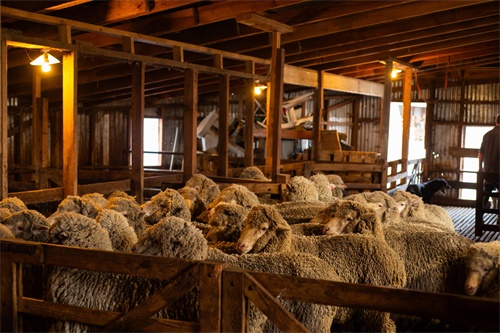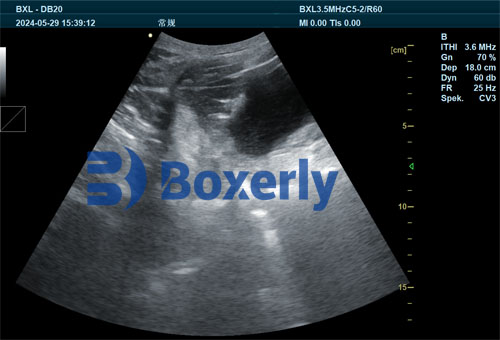Efficient and timely pregnancy detection is a cornerstone of modern livestock management. Whether you’re raising cattle, สุกร, แกะ, or goats, knowing whether an animal is pregnant—and how far along the pregnancy is—can drastically impact herd productivity, resource allocation, and overall farm profitability. One of the most transformative tools in this area is เทคโนโลยีอัลตราซาวนด์, a non-invasive, real-time imaging technique that has revolutionized how farmers and veterinarians assess reproductive status.

ในบทความนี้, I’ll explore how ultrasound enhances pregnancy detection in livestock operations, what global best practices tell us, and why this tool is becoming standard across progressive farms worldwide.
The Value of Early Pregnancy Detection in Livestock Management
As any farmer knows, early identification of pregnant females allows for better grouping, feed planning, and labor organization. Delayed detection, ในทางตรงกันข้าม, wastes time and resources. Traditionally, pregnancy in livestock was diagnosed through palpation, behavioral observation, or biochemical testing. While these methods are still used, they have notable limitations: low sensitivity in early stages, risk of misdiagnosis, and sometimes delayed results.
Ultrasound technology, particularly B-mode (brightness mode) และ อัลตราซาวนด์ Doppler, provides a fast, accurate, and non-invasive solution. With an experienced operator, pregnancy can be confirmed as early as 25–30 days in cows and 18–24 days in sows, long before external signs become apparent.
How Ultrasound Works in Reproductive Imaging
Ultrasound machines used in livestock typically emit high-frequency sound waves through a transducer probe. When these waves hit tissue interfaces—like a fetus, uterine wall, or fluid pocket—they bounce back and are interpreted into a grayscale image on a monitor. พื้นที่ veterinarian or trained technician can then interpret the shape, location, and viability of the embryo or fetus.
There are two main types of probes:
-
Linear probes (rectal use): Ideal for transrectal imaging in cattle and horses, providing high-resolution images for early diagnosis.
-
Convex probes (abdominal use): Often used in pigs, แกะ, and goats for transabdominal scanning.
Ultrasound not only confirms pregnancy but also provides insights into fetal viability, age estimation, และ detection of reproductive disorders, such as early embryonic death or uterine infections.
Application Across Species
Cattle
In beef and dairy herds, ultrasound is commonly used between 30–60 days post-insemination. Compared to rectal palpation, ultrasound can detect smaller structures and offers higher accuracy. It can also reveal twin pregnancies—valuable information in managing feed and calving strategies.
Many North American and European farms rely on portable ultrasound scanners, especially during synchronization and AI (artificial insemination) programs, to detect open cows early and rebreed them without delay.
Pigs
Swine operations benefit greatly from transabdominal ultrasound. As piglets grow quickly and the uterine horns are deeply located, palpation is nearly impossible. Ultrasound enables pregnancy detection from day 22 post-breeding. This allows farmers to separate non-pregnant sows early, optimizing space and reducing feed costs.
Sheep and Goats
In small ruminants, accurate pregnancy detection helps prevent overfeeding or underfeeding during gestation. Ultrasound can determine fetal numbers, which is essential when managing twin or triplet pregnancies—common in certain sheep breeds. Scanning is typically done between 45–80 days of gestation.

Benefits Recognized Globally
Across the world, farmers and animal scientists alike are embracing ultrasound as a decision-making tool. Here’s what international research and on-farm feedback suggest:
-
สหรัฐอเมริกา: Large-scale cattle producers use ultrasound to identify open cows early in AI programs. According to Kansas State University’s Beef Cattle Institute, ultrasound improves reproductive efficiency and supports strategic culling decisions.
-
สหราชอาณาจักร: Sheep farmers rely heavily on pregnancy scanning to manage winter feeding and prepare for lambing season. Studies from the University of Edinburgh have shown that ultrasound-based lambing plans reduce mortality and feed costs.
-
ออสเตรเลีย: In extensive grazing systems, ultrasound is used in goats and cattle to identify fertile animals in remote areas, helping ranchers plan more efficient seasonal breeding programs.
Common Challenges and How to Overcome Them
While ultrasound has clear advantages, it also comes with limitations:
-
Operator dependence: Image interpretation requires training. Inaccurate readings can occur if operators are inexperienced.
-
Equipment cost: Initial investment in high-quality machines can be significant, although long-term savings justify it.
-
Environmental limitations: Harsh field conditions—dust, temperature, light—can interfere with screen visibility or device function, but newer waterproof and sun-resistant models (e.g., IP56-rated ultrasound scanners) are addressing this.
To overcome these challenges, many farms invest in training workshops, collaborate with veterinary technicians, and choose rugged portable devices suited for livestock use.
Ultrasound-Guided Reproductive Decisions on My Farm
On my own cattle and sheep farm, ultrasound has become an irreplaceable tool. During breeding season, we conduct scans 35 days post-AI. The benefits are immediate:
-
Non-pregnant animals are identified early and re-inseminated.
-
Twin-bearing ewes receive additional nutritional support.
-
We reduce labor and feed wastage by avoiding prolonged care of open animals.
-
Fetal age estimates help us predict due dates, improving calving and lambing outcomes.
The real-time feedback from the ultrasound gives me peace of mind and ensures we run a data-driven operation.

The Economic Impact of Ultrasound in Pregnancy Detection
Pregnancy detection using ultrasound significantly improves the economic sustainability of livestock operations:
-
Reduced feed waste: Open animals are removed from gestation rations.
-
Improved reproductive cycle: Early identification enables timely rebreeding, shortening the calving interval.
-
Better labor planning: Knowing due dates helps prepare for parturition, reducing emergency interventions.
-
Accurate culling: Non-productive animals can be identified and culled sooner.
A 2022 report from the University of Nebraska–Lincoln found that integrating ultrasound in beef herds can increase net income by $25–$45 per cow annually, depending on herd size and reproductive strategy.
Innovations and Future Directions
Ultrasound technology continues to evolve. Today’s machines are more compact, ไร้สาย, and smartphone-compatible. Cloud storage and AI-based image analysis are being piloted in Europe and North America, which may soon allow farmers to automatically analyze pregnancy results.
There’s also growing interest in doppler ultrasound, which detects blood flow and can help determine fetal viability or ovarian activity with greater precision.
Global organizations like FAO and ILRI are promoting ultrasound access in developing countries, recognizing its role in improving food security through better reproductive management.
บทสรุป
Ultrasound technology is reshaping how livestock producers detect and manage pregnancy. ของมัน ความถูกต้อง, safety, ความเร็ว, and versatility make it an essential tool not only for veterinarians but for farmers who want to optimize reproductive performance and economic outcomes.
By combining technology with skilled management, livestock operations around the world are moving toward smarter, more sustainable practices. From cattle ranches in the Midwest to sheep farms in New Zealand, ultrasound is proving that better information leads to better results—and a more profitable future for livestock production.
References
-
Whitaker, D. A., & Smith, E. (2021). Veterinary Ultrasonography in Food-Producing Animals. Journal of Veterinary Imaging.
-
Beef Cattle Institute. (2023). “Use of Ultrasound for Growth Evaluation in Cattle.” https://www.beefcattleinstitute.org/ultrasound-growth
-
University of Nebraska–Lincoln. (2022). “Economic Impact of Early Pregnancy Detection in Cow-Calf Systems.”
-
University of Edinburgh, Royal (Dick) School of Veterinary Studies. (2021). “Pregnancy Scanning in Sheep Improves Productivity.”
-
FAO. (2023). “Reproductive Technologies in Livestock Production.” https://www.fao.org/animal-production